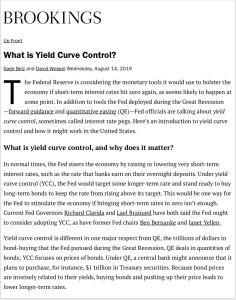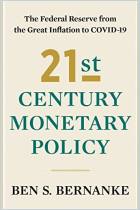Melden Sie sich bei getAbstract an, um die Zusammenfassung zu erhalten.

Melden Sie sich bei getAbstract an, um die Zusammenfassung zu erhalten.
Sage Belz and David Wessel
What is Yield Curve Control?
Brookings Institution, 2019
Was ist drin?
The Federal Reserve may have a new monetary policy tool at its disposal.
Recommendation
Markets closely monitored the yield curve inversion of the two-year and 10-year US Treasury notes in August 2019, an event that often warns of an upcoming recession. In case of a downturn, Federal Reserve officials would deploy their usual policy toolkit – lowering interest rates, issuing forward-looking guidance and unleashing a fresh round of quantitative easing. But Brookings Institution professionals Sage Belz and David Wessel explore an alternative option: yield curve control. Executives, regulators and investors will find this a valuable assessment of a potentially new Fed approach.
Summary
About the Authors
David Wessel is a senior fellow at the Brookings Institution and director of the Hutchins Center on Fiscal and Monetary Policy, where Sage Belz is a research analyst.



























Comment on this summary